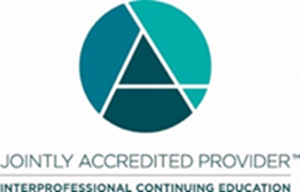PROGRAM
OVERVIEW
This webinar was recorded on October 13, 2023.
Currently, dialysis is a life-saving option for over
800,000 people in the U.S., typically requiring several treatments per week.
This number is on the rise due the increasing incidence of diabetes as well as
other risk factors. No matter the cause, every patient on home hemodialysis and
in-center hemodialysis must have vascular access. As the National Institute of
Diabetes, Digestive and Kidney Diseases (NIDDK) describes it, vascular access
is so critically important that it can be considered a hemodialysis patient’s
lifeline.’ This specially prepared vascular access point is where the dialysis
machine will connect to the patient’s bloodstream; without it, dialysis cannot
be performed. During dialysis treatments, the dialysis machine cleans the blood
then moves it back into the body. The three most common types of vascular
access for hemodialysis are an artery vein fistula, an artery vein graft and a
catheter. These are simply the basics and outline the importance of
vascular access.
Education in
this evolving field is critical, as clinicians face various challenges in
performing vascular access. This program has been formulated to further
educate the clinical community on these pitfalls, closing these gaps, leading
to improved patient care and best outcomes.
LEARNING OBJECTIVES
(1) Explain the various vascular access related
challenges, complications, including how to best access, decrease/manage risks
and tackle barriers in follow-up care
(2) Understand percutaneous AVF creation; the
technical concepts and innovative research in this emerging option for
hemodialysis access
(3) Define innovative surgical devices and new
technologies for vascular access as well as in-home dialysis
(4) Understand the emotional impact on the patient and
the role the surgeon plays in counseling ahead of the procedure
(5) Explain the advantages and disadvantages of access
centers versus continuity of care
(6) Define the role of the surgeon and
interventionists in fistula maintenance and long-term care
TARGET AUDIENCE
This activity is designed for a clinical audience; including physicians, surgeons,
fellows, residents, physician assistants and nurses (central venous catheter
(CVC), peripherally inserted central catheter (PICC), & peripheral
intravenous (PIV) nurses) who manage patients requiring dialysis with end stage
renal disease or a severe form of chronic kidney disease across various
specialties. These include; primary care, general & vascular surgery,
nephrology, interventional nephrology, cardiology, radiology, interventional
radiology, endocrinology, hematology & anesthesiology.

JOINT ACCREDITATION STATEMENT
In support of improving patient care, this activity
has been planned and implemented by Amedco LLC and Columbia University
Department of Surgery. Amedco LLC is jointly accredited by the
Accreditation Council for Continuing Medical Education (ACCME), the
Accreditation Council for Pharmacy ducation (ACPE) and the American Nurses
Credentialing Center (ANCC), to provide continuing education for the healthcare
team.
Physicians (ACCME) Credit
Designation
Amedco LLC designates this live virtual activity for a
maximum of 4.75 AMA PRA Category 1 Credits![]() . Physicians should claim
only the credit commensurate with the extent of their participation in the
activity.
. Physicians should claim
only the credit commensurate with the extent of their participation in the
activity.
Physician
Assistants
PAs may claim a maximum of 4.75 Category 1 credits for
completing this activity. NCCPA accepts AMA
PRA Category 1 Credits![]() from
organizations accredited by ACCME or a recognized state medical society.
from
organizations accredited by ACCME or a recognized state medical society.
Nurse Practitioners
The American Association of Nurse
Practitioners (AANP) recognizes the Accreditation Council for Continuing
Medical Education (ACCME) and the American Nurses Credentialing Center (ANCC)
as approved accreditors and allow reciprocity for AANPCP continuing education
credit. 4.75 hours.
Method of Participation
Once you register for the program, a confirmation email will be sent to you with the webinar recording.
